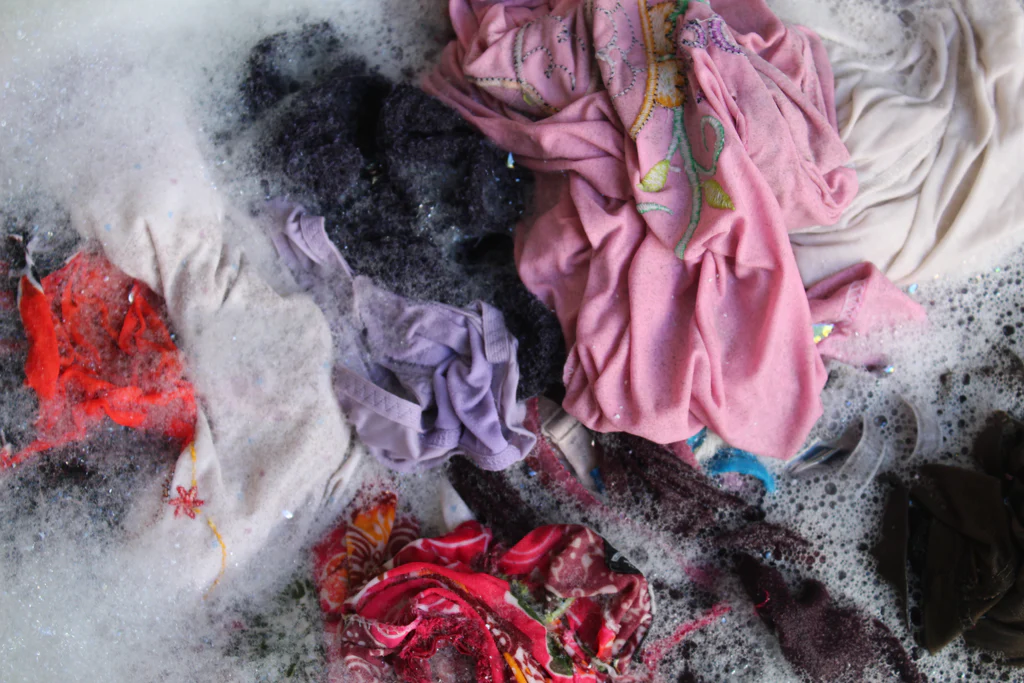Choosing The Best Water Temperature For Your Laundry
The Temperature Of The Water You Choose To Wash Your Clothes In Makes A Huge Difference.
The difference between cold and hot water can mean important factors including energy efficiency, how well the clothes get clean, and even the amount of wear and tear on the fabric. So here’s a helpful guide for how to choose the best water temperature when washing different types of loads of laundry.
Washing clothes in either warm or hot water will use more energy than washing in cold water. Therefore to save money, or to be friendlier to the environment many people like to choose cold water for clothes washing. You can also save energy, no matter what water temperature you use, by only washing clothes as often as really needed, and not more frequently. Use this guide to how often to wash laundry to help you know the right frequency you should be washing various types of clothing and household items in your home.
TEMP TERMINOLOGY
The “cold” water that comes out of your tap in the summer in Georgia, which may feel a bit lukewarm, is a different degree temperature than the “cold” water that comes out in the winter in Colorado, which can be quite frigid. Same for hot water, because people’s hot water heaters are set to different temperatures for the high end, typically in the range of 120°-140° F (48°-60° C). Because of these variations in different areas what manufacturers mean by the terms “cold,” “warm,” and “hot,” are actually short hand for certain standard temperature ranges, even if those don’t actually match up with the temperature of the waters designated as these terms as it comes out of your washing machine.
Here are the standard ranges:
- Cold water: 65°-80° F (18°-26° C)
- Warm water: 90°-110° F (32°-43° C)
- Hot water: 130° F and up (54° C and up)
What you can see from these standard ranges is that what care labels are calling “cold” water is really more lukewarm, or cool.

For most clothing, the hotter the water, the cleaner the clothing will be, however it may be necessary to use other water temperatures.
Hot Water Pros:
- It sanitizes and kills germs better
- It dissolves detergents more efficiently
- Kills dust mites
- Helps remove built-up grime so clothes look brighter and less dingy
Hot Water Cons:
- It can cause shrinking and fading in some fabrics
- It can “set in” some types of stains, especially blood
- It can make clothes look older
- It can be more expensive

All of that said, how then do you choose the water temperature for each load and what do these temperature terms really mean?
Clothing labels typically indicate the information needed to launder the items properly. The labels will often detail the best water temperature as well as cycle to clean the item correctly. Sorting the items by color, fabric, weight, and washing temperature to wash appropriately will provide much better cleaning results.
USE COOL WATER FOR…
- Items washed on the delicate cycle, such as pantyhose, lingerie, washable silk, wools
- Items with a delicate construction, such as an antique fabric, or a lacy fabric
- Dark colored clothing or any item that you think is going to bleed or the dye will run (also wash those items separately from everything else)
- Items that have a protein stain, such as a blood stain, dairy-based stains or bodily fluids
- Items that aren’t exceptionally dirty – those that are just lightly soiled
Cold water is not very effective in dissolving detergent and laundry boosters and getting clothes adequately clean, so it’s best left for a pre or post wash rinse cycle if anything. If you do choose to use cold water in the wash cycle, make sure to use an ample amount of detergent and to use a longer wash cycle.
If you insist on using cold water, or you don’t have a choice but to use cold only, make sure you choose a laundry detergent created specifically for cold water.
USE WARM WATER FOR…
- Bright colors (that would noticeably fade after many washes in hotter water)
- Items washed on permanent-press (synthetic materials: nylon, polyester, spandex, rayon blends, etc)
- Items that are moderately soiled
- Jeans
For most people, the majority of their laundry is washed with warm water. Warm water is actually exactly what it sounds like, a mix of hot and cold. Some machines mix the hot and cold water 50%/50%, although many newer machines mix 60%/40%.
USE HOT WATER FOR…
- Bath towels, sheets, and all other bedding
- Kitchen towels, dish rags, pot holders
- Heavily soiled items (sweaty work-out clothes, etc)
- Items of sturdy fabric, such as white cotton t-shirts or underwear
- Cloth diapers
- Any item that is stained with grease or oils
- Any clothing when someone has been sick
- Cleaning rags and cloths
